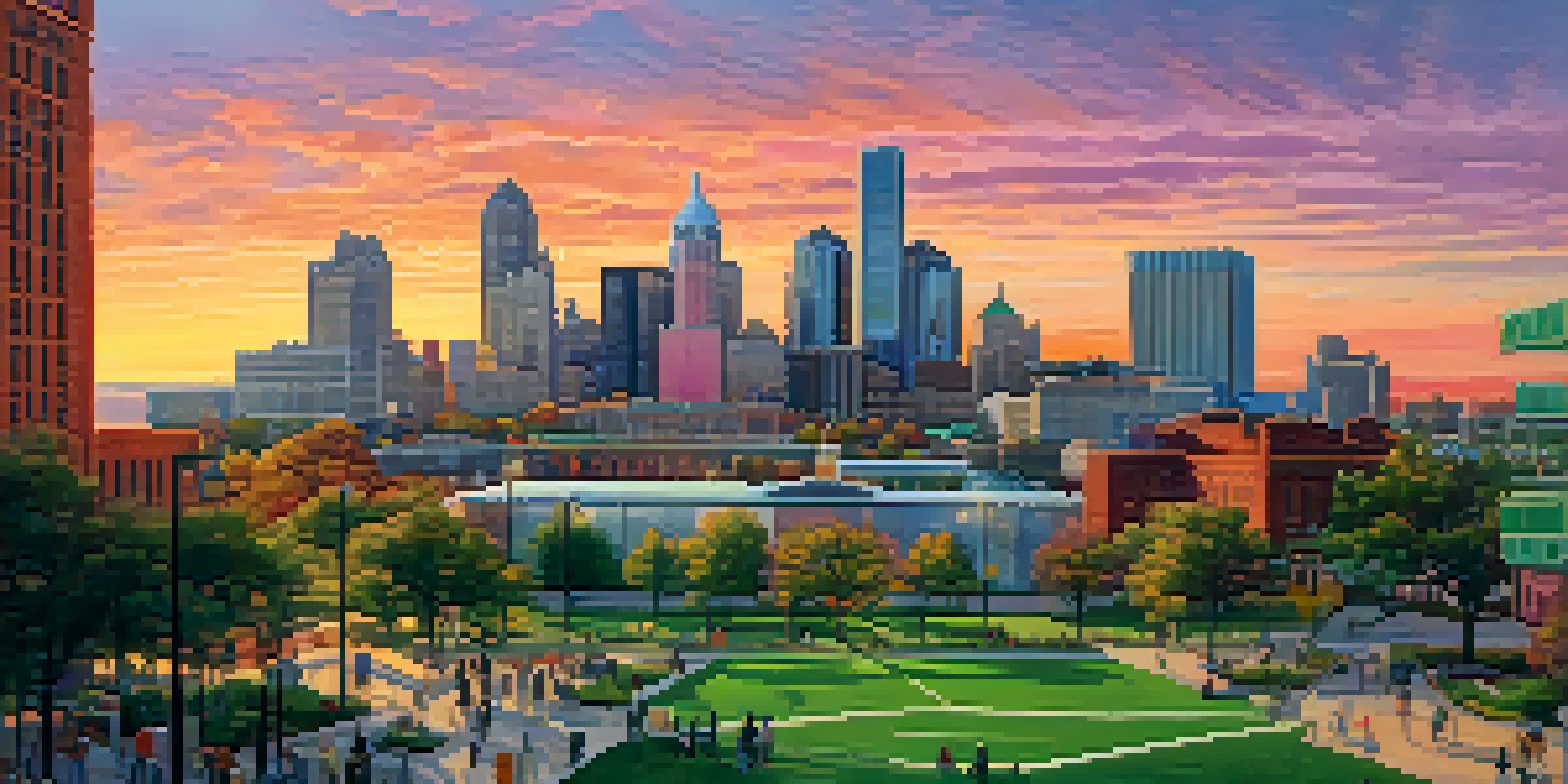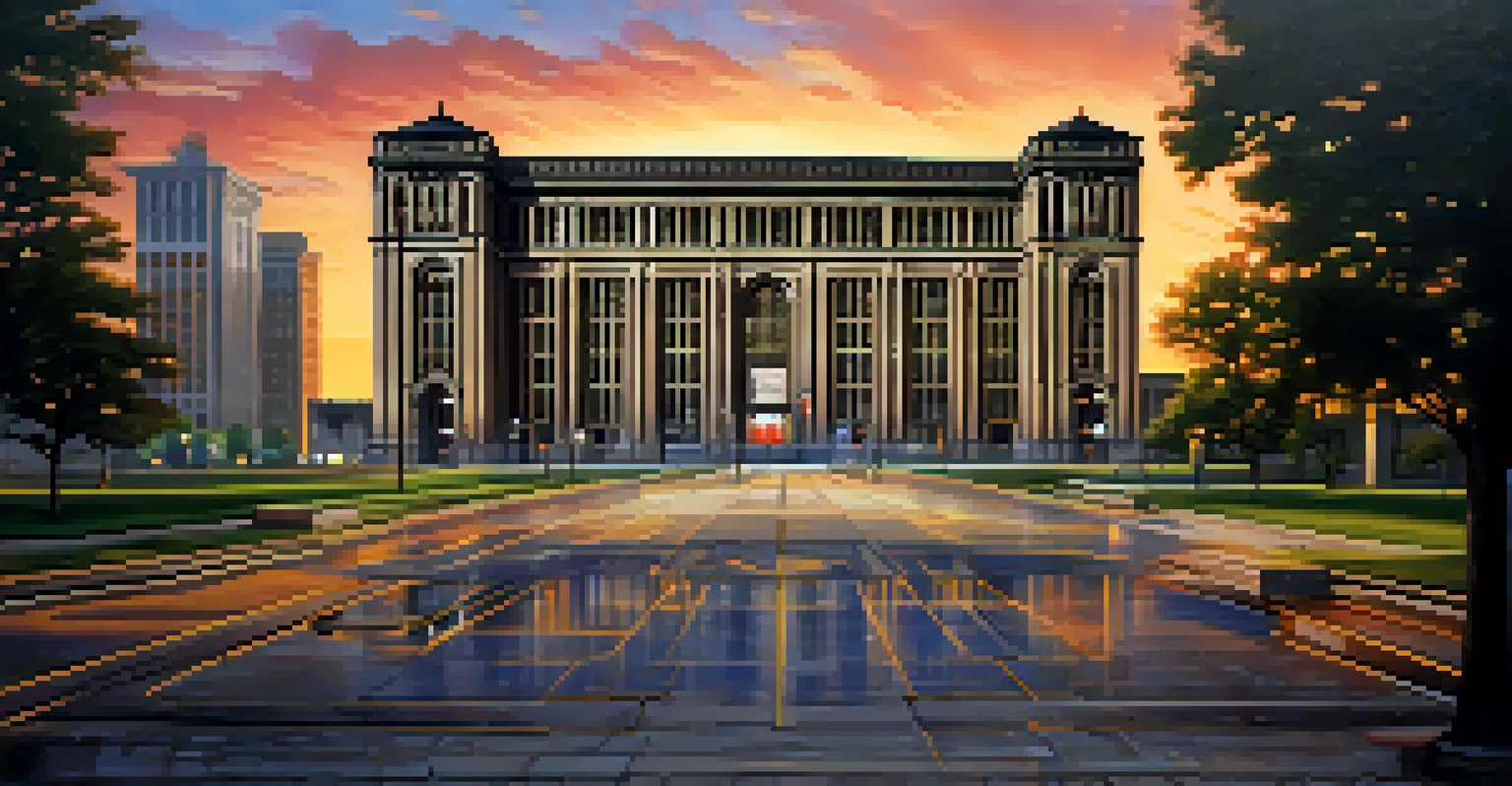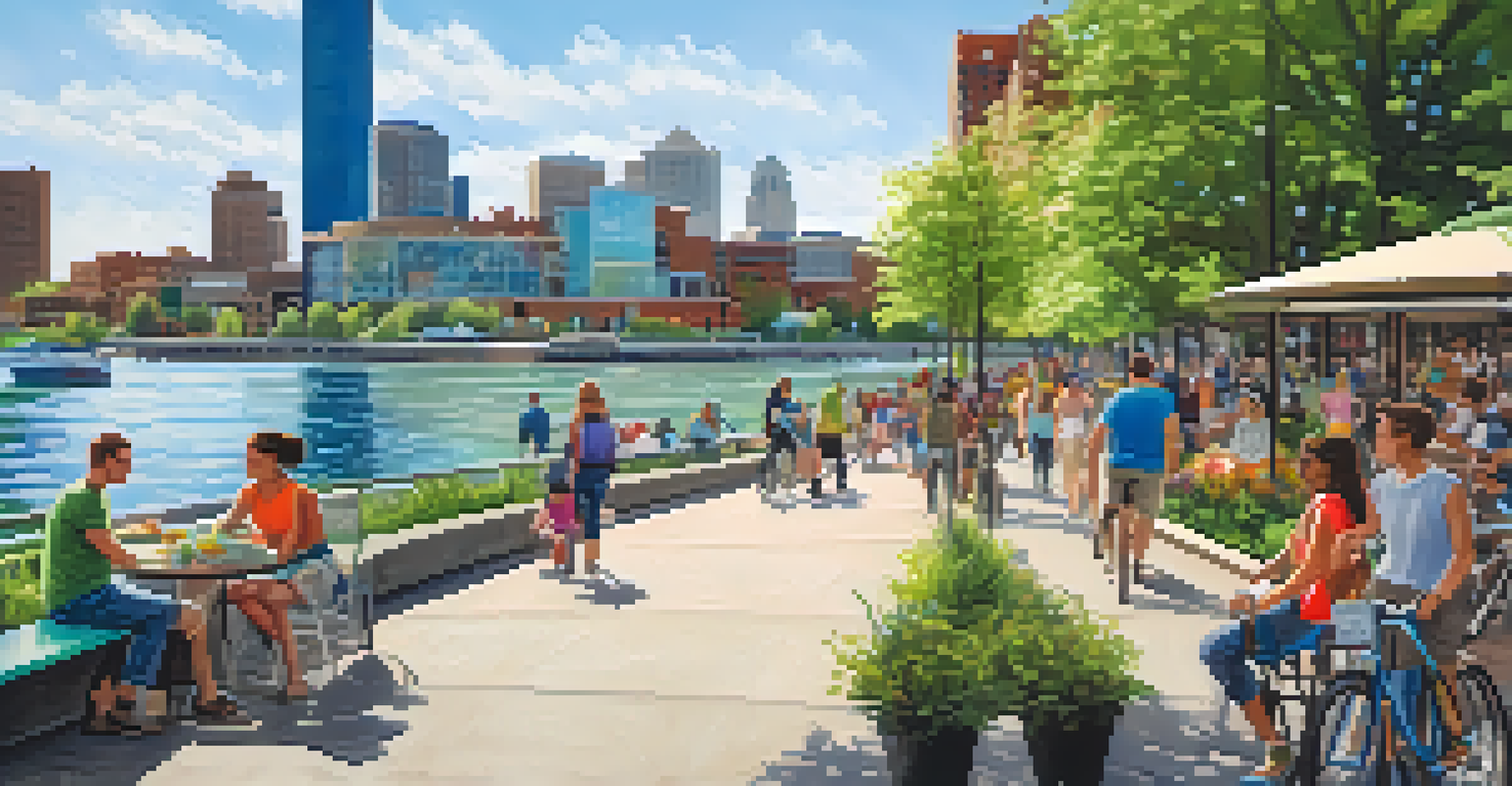Revitalizing Detroit: Modern Architecture in Historic Settings

Detroit's Architectural Renaissance: A New Chapter Begins
Detroit is experiencing a remarkable architectural renaissance, blending the old with the new. This revitalization is not just about brick and mortar; it reflects the city’s spirit of resilience and innovation. From towering skyscrapers to sleek modern buildings, the city is redefining its skyline while honoring its historical roots.
Architecture is the art of how to waste space.
One prime example is the recent restoration of historic structures that have been transformed into modern spaces. These developments are more than just aesthetic upgrades; they serve as functional hubs for businesses and communities. This harmonious blend showcases how respecting the past can pave the way for a vibrant future.
As the city evolves, it attracts new residents and businesses, eager to be part of this transformative journey. The architectural landscape of Detroit is becoming a canvas where history and modernity coexist, telling a story of rebirth and hope.
Historic Landmarks: A Canvas for Modern Innovation
Historic landmarks in Detroit serve as a backdrop for modern architectural innovations, creating a unique visual narrative. Buildings like the Michigan Central Station, once abandoned, are now being repurposed into dynamic spaces for innovation and creativity. This thoughtful integration allows the city to retain its character while embracing new ideas.

Moreover, the juxtaposition of modern design against historical structures invites conversations about identity and progress. It prompts residents and visitors alike to appreciate the layers of history that shape the present. For example, the design of new buildings often draws inspiration from the craftsmanship of the past, creating a dialogue between eras.
Detroit Blends History and Innovation
The city's architectural renaissance showcases a unique fusion of historic structures and modern designs, reflecting its resilience and forward-thinking spirit.
This innovative approach not only enhances the aesthetic appeal but also fosters a sense of community pride. As modern architecture breathes new life into these historic landmarks, it reinforces the idea that a city can evolve without losing its soul.
Community Spaces: Where Modern Meets Tradition
Modern architecture in Detroit isn’t just about buildings; it’s about creating vibrant community spaces. Parks, plazas, and public squares are being designed with the intention of bringing people together. These spaces often incorporate elements of traditional architecture, making them feel familiar yet fresh.
The greatest buildings are not always the biggest, but the ones that tell a story.
For instance, the recent revitalization of the RiverWalk has transformed the waterfront into a lively gathering place, blending nature with urban design. This area, now bustling with activity, invites residents to engage with their surroundings while enjoying stunning views of the Detroit River. Such developments show how modern architecture can enhance public life.
Furthermore, these community spaces often host events that celebrate both local culture and innovation. They become focal points for social interaction, fostering a sense of belonging among residents. This connection to place is crucial in a city that is redefining itself, making the blend of modern and traditional architecture even more significant.
Sustainable Architecture: The Green Future of Detroit
Sustainability is at the forefront of Detroit's architectural revival, with many new projects focusing on eco-friendly designs. Modern buildings are increasingly incorporating green technologies, such as solar panels and energy-efficient systems. This shift not only reduces environmental impact but also promotes long-term economic viability.
For example, the adaptive reuse of old factories into modern, sustainable living spaces exemplifies this trend. Developers are creatively transforming these spaces to meet contemporary standards, while maintaining their historical significance. This approach not only breathes new life into old structures but also minimizes waste and celebrates the city’s industrial heritage.
Community Spaces Foster Connections
Modern architecture in Detroit prioritizes vibrant community spaces that enhance social interaction and celebrate local culture.
Incorporating sustainable practices in architecture is not merely a trend; it's a necessity for the city's future. As Detroit continues to grow, the commitment to sustainable development will help ensure that its architectural landscape remains vibrant and resilient for generations to come.
Art and Architecture: A Symbiotic Relationship
Art plays a crucial role in Detroit's architectural landscape, enriching the city’s aesthetic and cultural fabric. Public art installations and murals are becoming integral to new developments, creating a dialogue between architecture and creativity. This symbiotic relationship enhances the overall experience for residents and visitors alike.
For instance, the incorporation of local artwork into modern buildings not only beautifies the space but also reflects the community's identity. It tells stories of the city’s past, present, and hopes for the future. This artistic touch helps bridge the gap between the historical and the contemporary, making each project unique.
Moreover, art-infused architecture encourages collaboration among local artists and architects, fostering a vibrant creative economy. As Detroit embraces this synergy, it solidifies its reputation as a city where innovation and creativity thrive hand in hand.
Cultural Institutions: Modern Spaces for Historic Narratives
Cultural institutions in Detroit are reimagining their spaces to make history accessible through modern design. Museums and galleries are not just repositories of the past; they are evolving into interactive spaces that engage visitors. This transformation helps to connect the community with its heritage while inviting new perspectives.
For example, the Detroit Institute of Arts has expanded its facilities, integrating modern elements that enhance the visitor experience. These changes allow for a more dynamic presentation of art and history, encouraging dialogue and understanding. Such initiatives demonstrate how modern architecture can amplify the storytelling of a city's rich cultural tapestry.
Sustainability Shapes Future Designs
Detroit's commitment to sustainable architecture is evident in the integration of eco-friendly technologies and the adaptive reuse of historic buildings.
Additionally, these cultural hubs often serve as community gathering places, promoting education and collaboration. By bridging the gap between historical narratives and modern design, Detroit’s cultural institutions are playing a pivotal role in the city’s revitalization.
The Future of Detroit: A Harmonious Blend of Old and New
Looking ahead, Detroit's architectural future promises a harmonious blend of old and new. The city is poised to become a model for others, demonstrating how to respect history while embracing innovation. As developers and architects continue to explore this balance, the skyline will evolve, reflecting a multifaceted identity.
This approach not only enhances the city’s aesthetic appeal but also fosters a sense of community pride. Residents are increasingly valuing the stories behind the buildings, understanding that each structure contributes to the city's narrative. This collective appreciation is vital for maintaining the momentum of Detroit’s revitalization.

Ultimately, the future of Detroit lies in its ability to adapt and thrive, drawing inspiration from its rich past while confidently stepping into a new era. As modern architecture continues to reshape the city, it serves as a testament to resilience, creativity, and the power of community.